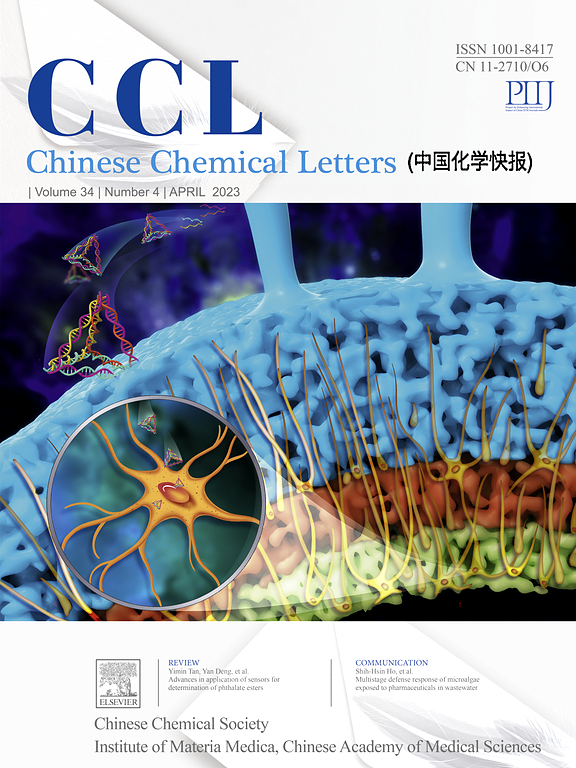Optimizing CsPbBr3 perovskite solar cell interface and performance through tetraphenylethene derivatives
IF 9.4
1区 化学
Q1 CHEMISTRY, MULTIDISCIPLINARY
引用次数: 0
Abstract
Recently, CsPbBr3 perovskite solar cells (PSCs) have garnered attention due to cost-effectiveness and reliability. However, hole transport limitations lead to charge recombination and lower power conversion efficiency (PCE). Defects in the CsPbBr3 layer, poor hole transport at the interface with carbon electrodes, and energy level differences hinder performance. Optimizing the perovskite layer using electron-donating organic molecules containing -NH2 groups enhances efficiency and stability by passivating defects and modulating lattice structure. In this work, tetra(4-aminophenyl)ethylene (TPE) and tetra(4-aminobiphenyl)ethylene (TPE-Ph) were employed to optimize the CsPbBr3/carbon electrode interface. Their strong electron-donating properties and amino groups facilitate hole transfer and defect passivation, boosting PCE to 9.38% and enhancing stability.

通过四苯乙烯衍生物优化CsPbBr3钙钛矿太阳能电池界面和性能
近年来,CsPbBr3钙钛矿太阳能电池(PSCs)因其成本效益和可靠性而备受关注。然而,空穴输运限制导致电荷复合和较低的功率转换效率(PCE)。CsPbBr3层的缺陷、与碳电极界面空穴输运差以及能级差异阻碍了性能的提高。利用含-NH2基团的供电子有机分子对钙钛矿层进行优化,通过钝化缺陷和调制晶格结构来提高效率和稳定性。采用四(4-氨基苯基)乙烯(TPE)和四(4-氨基联苯)乙烯(TPE- ph)优化CsPbBr3/碳电极界面。它们的强给电子性质和氨基有利于空穴转移和缺陷钝化,使PCE提高到9.38%,增强了稳定性。
本文章由计算机程序翻译,如有差异,请以英文原文为准。
求助全文
约1分钟内获得全文
求助全文
来源期刊

Chinese Chemical Letters
化学-化学综合
CiteScore
14.10
自引率
15.40%
发文量
8969
审稿时长
1.6 months
期刊介绍:
Chinese Chemical Letters (CCL) (ISSN 1001-8417) was founded in July 1990. The journal publishes preliminary accounts in the whole field of chemistry, including inorganic chemistry, organic chemistry, analytical chemistry, physical chemistry, polymer chemistry, applied chemistry, etc.Chinese Chemical Letters does not accept articles previously published or scheduled to be published. To verify originality, your article may be checked by the originality detection service CrossCheck.
 求助内容:
求助内容: 应助结果提醒方式:
应助结果提醒方式:


